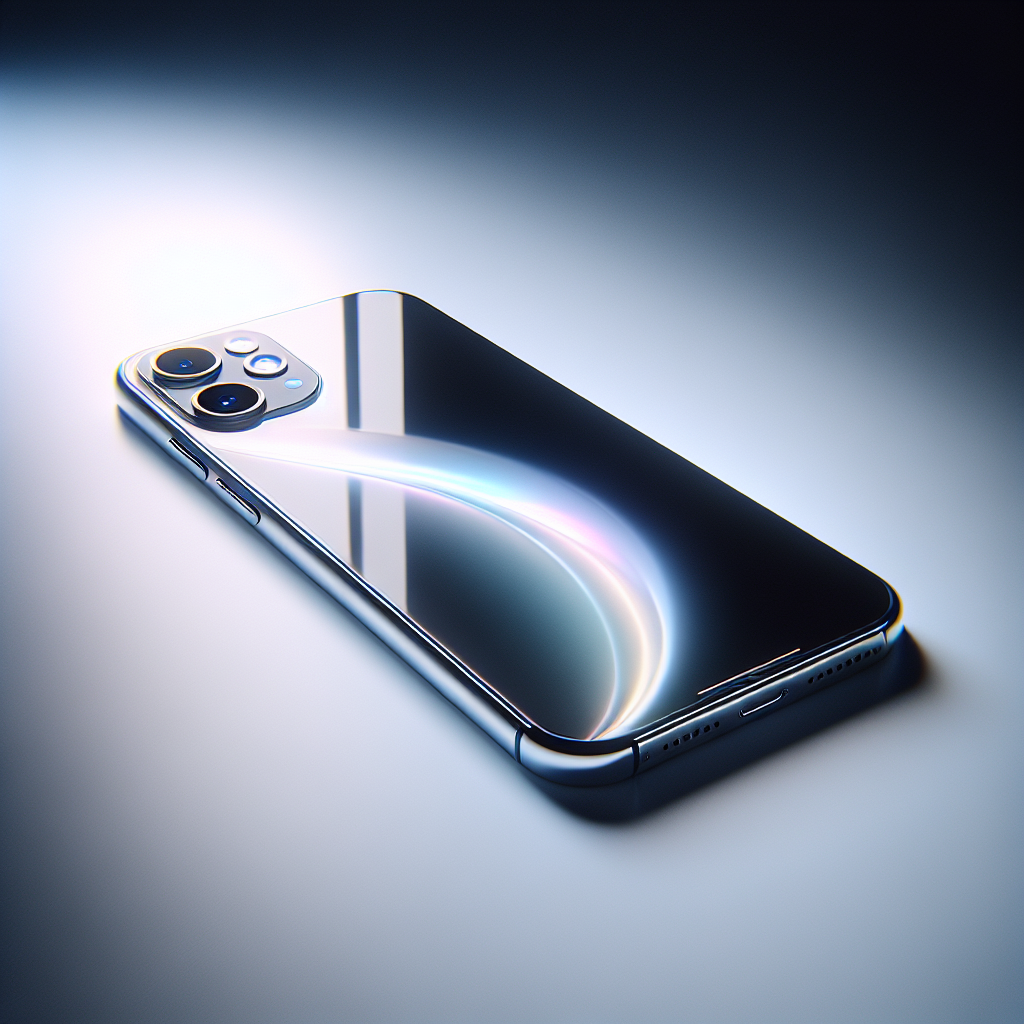Each year, Apple fans and tech enthusiasts eagerly await the launch of the next iPhone generation. The iPhone, which began as a revolutionary gadget in 2007, has grown into a cultural and technological icon. With every new release, Apple sets the bar higher in design, performance, camera capabilities, and ecosystem integration. As we approach the unveiling of the next iPhone generation, speculations and leaks are swirling across the web.
So, what can we realistically expect from the next iPhone? In this article, we’ll explore the most likely features, design updates, hardware improvements, and software enhancements, based on leaks, patents, industry trends, and Apple’s past strategies.


1. A Familiar Yet Evolved Design
Apple tends to stick with a major design language for about three years, refining rather than overhauling it each cycle. The current flat-edged design, reminiscent of the iPhone 4 era, has been popular since the iPhone 12.
iPhones Likely Design Updates:
- Thinner bezels around the display to increase screen real estate.
- Titanium frames (continuing from the iPhone 15 Pro) for greater durability and a lighter build.
- A smaller or no notch, as Apple shifts more toward under-display Face ID technology.
- Potential introduction of a solid-state button system, improving water resistance and tactile feedback.
Color options are also expected to refresh, possibly with unique finishes exclusive to Pro models to differentiate them visually.
2. Display Enhancements of iPhones
The iPhone display is already industry-leading, especially on Pro models with ProMotion technology (120Hz refresh rate). But Apple is never one to stop innovating.
Anticipated Upgrades for iPhones:
- Brighter and more efficient OLED panels, potentially with micro-lens array (MLA) technology to boost brightness without sacrificing battery life.
- Under-display Face ID sensors: Early leaks suggest Apple may hide more front-facing sensors beneath the screen, reducing or eliminating the Dynamic Island on some models.
- Always-On improvements: More customization and information on the Always-On Display, following user feedback and iOS refinements.
Foldable iPhones have been rumored for years, but industry insiders suggest Apple is taking a cautious approach, so a foldable version is unlikely in the immediate next generation.
3. Performance and the A18 Chip in iPhone
Each new iPhone brings a new chip, and this year should be no exception. The next generation is likely to feature Apple’s A18 chipset, which will be based on TSMC’s 3nm process—the most advanced fabrication technology currently available.
Key Expectations:
- Increased power efficiency, leading to longer battery life.
- Improved GPU performance, especially for gaming and AR applications.
- Better AI and machine learning processing, essential for features like image processing, Siri enhancements, and real-time transcription.
Pro models might feature a more powerful variant—perhaps branded as the A18 Pro—to separate them from the base models and justify their premium pricing.
4. Camera Upgrades: More Than Just Megapixels
Camera performance has become one of the top deciding factors for smartphone buyers. Apple knows this and continues to invest heavily in camera innovation.
Likely Improvements:
- Higher-resolution telephoto lenses, possibly a 48MP zoom lens to complement the main sensor.
- Improved low-light performance with larger apertures and software optimization.
- Better optical zoom on smaller models, perhaps expanding the periscope lens to more than just the Pro Max.
- Video enhancements, including 8K recording and improved stabilization.
Apple is also expected to refine its computational photography, particularly in Smart HDR and Night Mode, with the help of upgraded AI chips.
5. USB-C Across the Board
Following new European Union regulations and the shift seen in the iPhone 15 series, the next generation of iPhones will likely continue using USB-C ports across all models. But expect Apple to implement some differences between the Pro and non-Pro lines.
Rumored Differences:
- Higher data transfer speeds on Pro models (up to 40Gbps), which would benefit professionals transferring large video files.
- Faster charging, although exact wattage improvements remain unclear.
- Enhanced accessory ecosystem, as more third-party USB-C accessories become certified under Apple’s Made-for-iPhone (MFi) program.
6. Software: iOS Innovations of iPhone Tailored to Hardware
The next iPhone generation will ship with the latest iOS version—most likely iOS 18—which will be revealed at Apple’s WWDC event. This software will be optimized for the new hardware and include features exclusive to the latest models.
Possible iOS Features:
- AI-integrated tools, such as smarter photo editing, real-time translations, and predictive text via Apple’s rumored large language model (LLM).
- More Dynamic Island functionalities, helping integrate more app notifications and live widgets.
- Expanded customization with lock screen widgets, control center redesign, and enhanced multitasking.
The close integration between iOS and hardware remains one of Apple’s most compelling strengths, and it’s expected to continue improving with the next iPhone.
7. Battery Life and Charging Technology
Battery life has steadily improved across iPhone generations, especially in Pro Max models. While revolutionary new battery tech is not expected immediately, Apple may still make noticeable gains.
Expected Improvements:
- Better battery efficiency via the 3nm chip.
- Potential use of stacked battery technology, offering higher density in the same space.
- MagSafe upgrades with stronger magnets and possibly faster wireless charging.
Wireless charging could also benefit from Qi2 standard support, making it compatible with a broader range of accessories without sacrificing speed or safety.
8. Pricing and Lineup Strategy
With inflation and higher component costs, Apple may subtly adjust pricing or storage options to maintain profitability.
What to Watch:
- Base models may retain current pricing, but with increased storage (starting at 128GB or 256GB).
- Pro Max models could see a slight increase, especially if exclusive camera tech is introduced.
- Apple may continue to offer four main models: base, Plus, Pro, and Pro Max.
There’s also speculation about a new naming convention, with “Ultra” replacing “Pro Max,” aligning with Apple’s other product lines like Apple Watch Ultra.
Final Thoughts: Incremental or Revolutionary?
The next iPhone generation is shaping up to be a refinement-heavy release rather than a complete overhaul—but that’s not a bad thing. Apple is known for delivering highly polished upgrades rather than rushing experimental features to market.
With a cutting-edge chip, camera improvements, iOS enhancements, and subtle design changes, Apple’s next iPhone generation will likely set new standards for premium smartphones.
As always, the real magic happens when hardware, software, and ecosystem work together—and that’s where Apple continues to lead.
As you move toward the midpoint of the article, this paragraph provides an opportunity to connect earlier ideas with new insights. Use this space to present alternative perspectives or address potential questions readers might have. Strike a balance between depth and readability, ensuring the information remains digestible. This section can also serve as a transition to the closing points, maintaining momentum as you steer the discussion to its final stages.


Leave a Reply